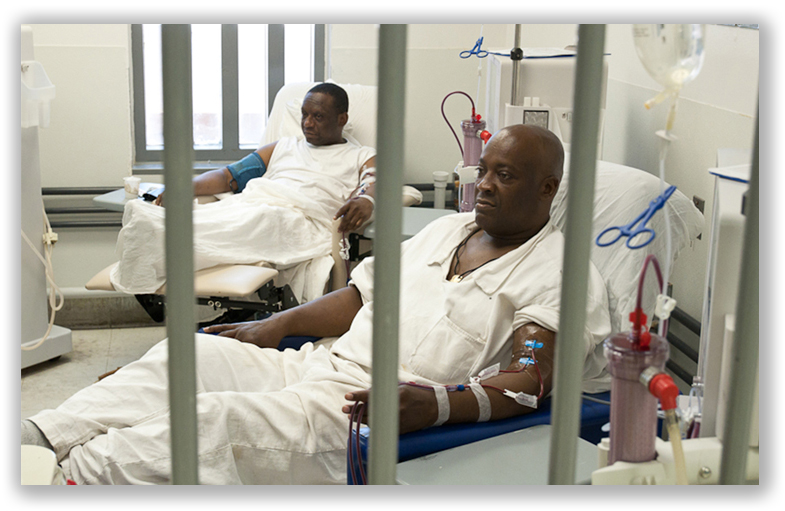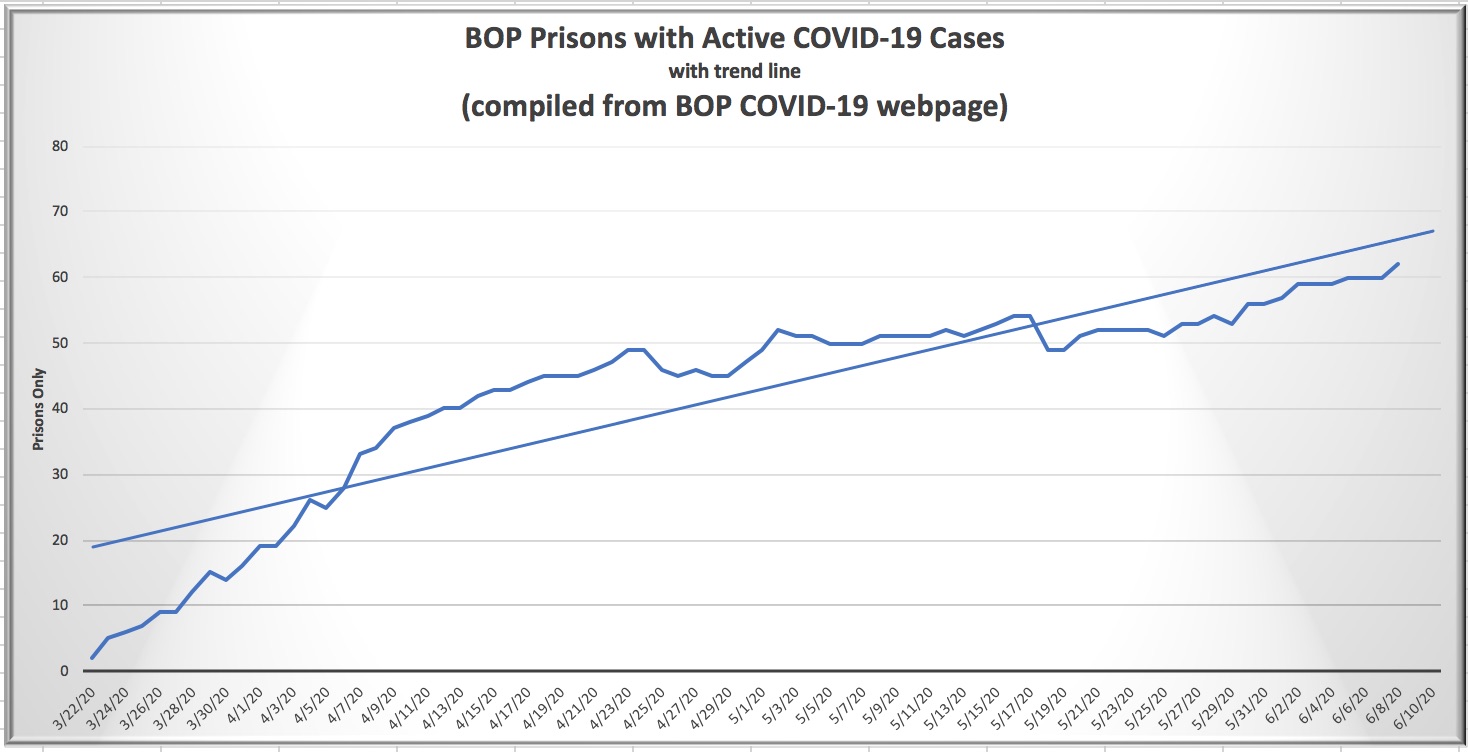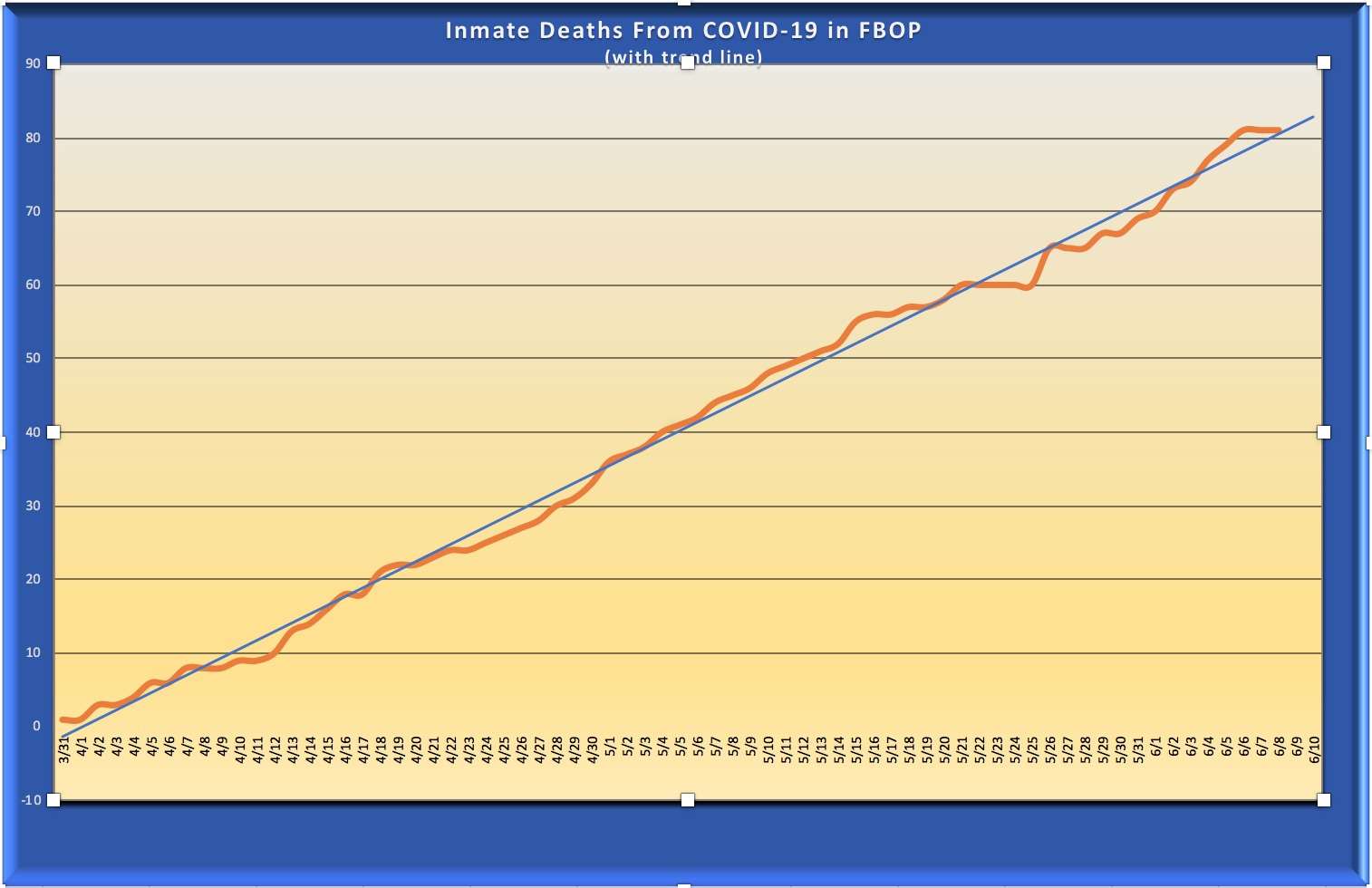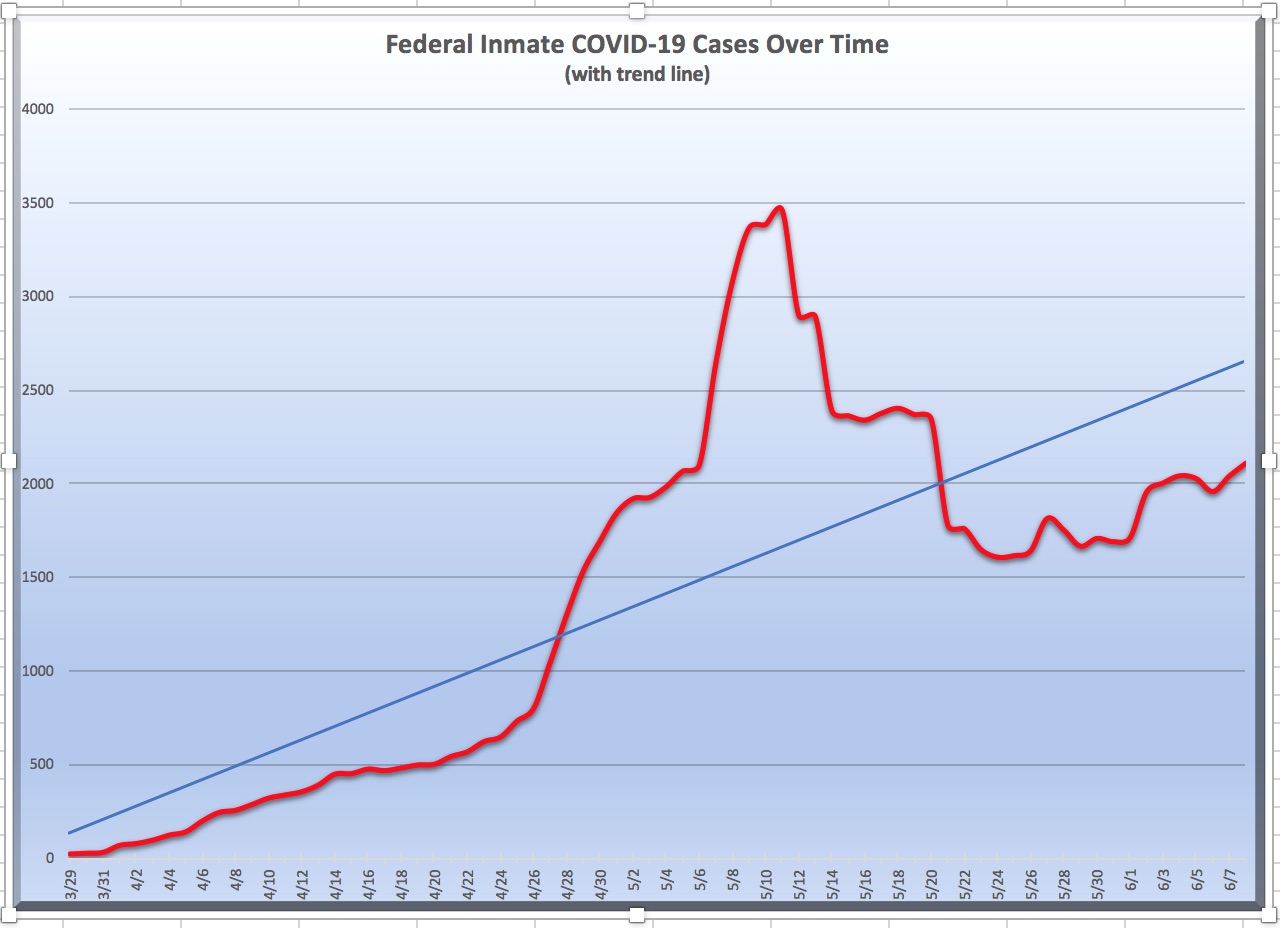We post news and comment on federal criminal justice issues, focused primarily on trial and post-conviction matters, legislative initiatives, and sentencing issues.

DEATH DOESN’T TAKE A HOLIDAY, BUT BOP SEEKS NORMALCY
Six more inmates died of COVID-19 last week, bringing the BOP’s death total to 116. Twenty-two have died since July 1. Even while the BOP heralded a drop in the number of sick inmates from 2,476 to 1,395, a reduction of 44%, the number of sick staffers hit 580, an increase of 14% from last week (and all-time high). COVID-9 has now reached a record 114 institutions (93% of all BOP facilities).
 Still, the BOP bravely whistles a happy tune, seeking a return to normalcy as though it has the virus on the run. The agency announced Phase 9 of its rickety COVID-19 “Action Plan.” Phase 9 relaunches a number of EBRR-sanctioned programming (the programs that earn First Step Act credit), some – like the Residential Drug Treatment Program – to 100% and others to half capacity. UNICOR, the federal prison industry, is to spool up to 80% by September 1 and 100% a month later. Recreation time outside will resume, with limitations on group size and length of rec sessions. Inmate transportation begins again.
Still, the BOP bravely whistles a happy tune, seeking a return to normalcy as though it has the virus on the run. The agency announced Phase 9 of its rickety COVID-19 “Action Plan.” Phase 9 relaunches a number of EBRR-sanctioned programming (the programs that earn First Step Act credit), some – like the Residential Drug Treatment Program – to 100% and others to half capacity. UNICOR, the federal prison industry, is to spool up to 80% by September 1 and 100% a month later. Recreation time outside will resume, with limitations on group size and length of rec sessions. Inmate transportation begins again.
Meanwhile, fresh breakouts of COVID-19 were reported at USP Lewisburg (51 ill), FCI Loretto (37 ill), the Victorville, California, prison complex (127), USP Marion (70 ill) and FCI Edgefield (60 ill). Those locations join Coleman, Miami, Elkton, Forrest City, Beaumont, Carswell, Oklahoma City, Three Rivers and scores of other BOP institutions with the virus. CNN last week branded FCI Seagoville as “the hardest-hit federal prison in the United States” where “more than 1,300 of the roughly 1,750 prisoners have tested positive for the virus — a stunning three out of every four inmates.”
Since the beginning of May, when there was only a single coronavirus case at Seagoville, the number of inmates testing positive soared to 1,333, according to BOP. Twenty-eight of the roughly 300 prison employees have also tested positive. The outbreak means that the facility has more coronavirus cases than about 85% of the counties in the US.
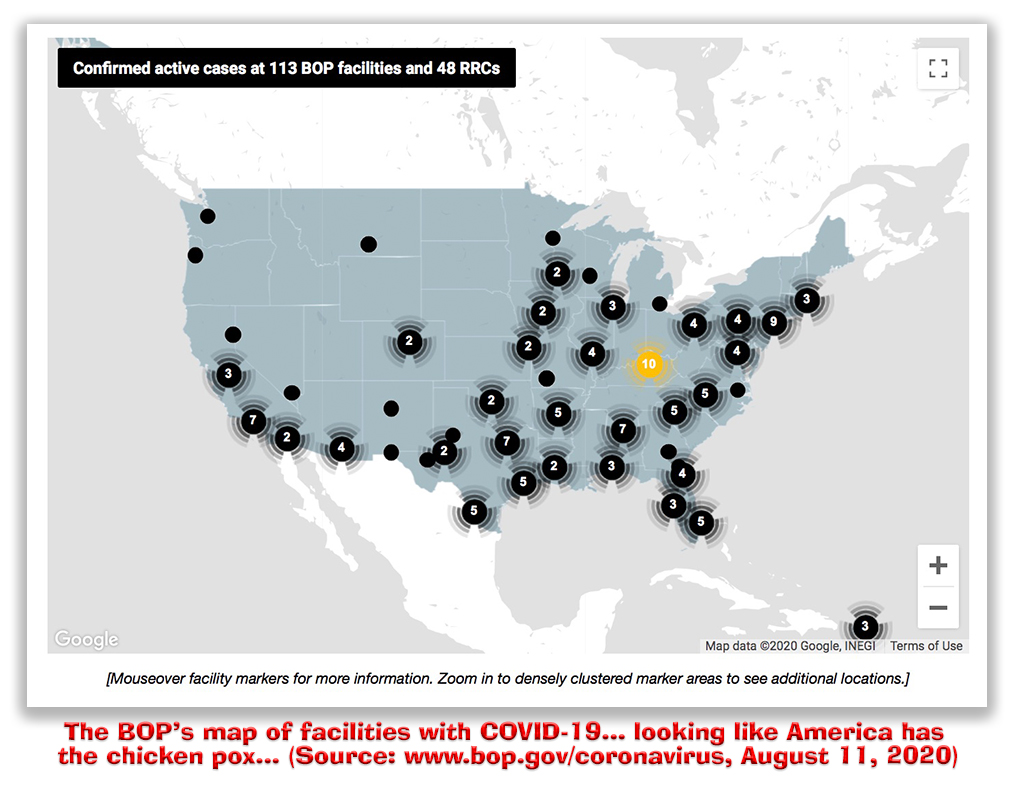 The virus has reached FCC Florence (Colorado) and FDC Honolulu as well.
The virus has reached FCC Florence (Colorado) and FDC Honolulu as well.
At FCI Miami, in Florida, nearly half of the inmates reportedly have tested positive. Kareen Troitino, the FCI Miami corrections officer union president, told ABC News that the virus was spread by one employee to inmates at the facility and, within a day cases at the facility went from one to four. Troitino says the only protective equipment the BOP issued were surgical masks. “One employee walked into work. He did not show a fever. He passed our screening procedures. He was positive. And that one employee spread it to numerous inmates. And then that’s it. Ever since then, it’s been a disaster.”
Troitino’s union local has sued the BOP and several other federal agencies, seeking hazard pay for at-risk essential workers.
In Washington, D.C., Democratic senators and representatives sponsored legislation in both chambers last Thursday to require the array of agencies that administer the nation’s jails and prisons to collect and report publicly detailed information about the spread of COVID-19 in their facilities. Joe Rojas, southeast regional vice president of the federal prison employees, told ABC News, “The Bureau is the largest agency within the DOJ and there’s no oversight. The BOP director doesn’t even get confirmed he just gets appointed.”
Forbes magazine complained last week that the BOP’s “Phase 9 Action Plan… looks a lot like Phase Eight… which looked a lot like Phase Seven. It begs the question as to whether there is a cohesive plan to address the COVID-19 pandemic that has infected over 10,000 federal inmates and over 1,000 correctional staff… killed 110 inmates and one staff member.”
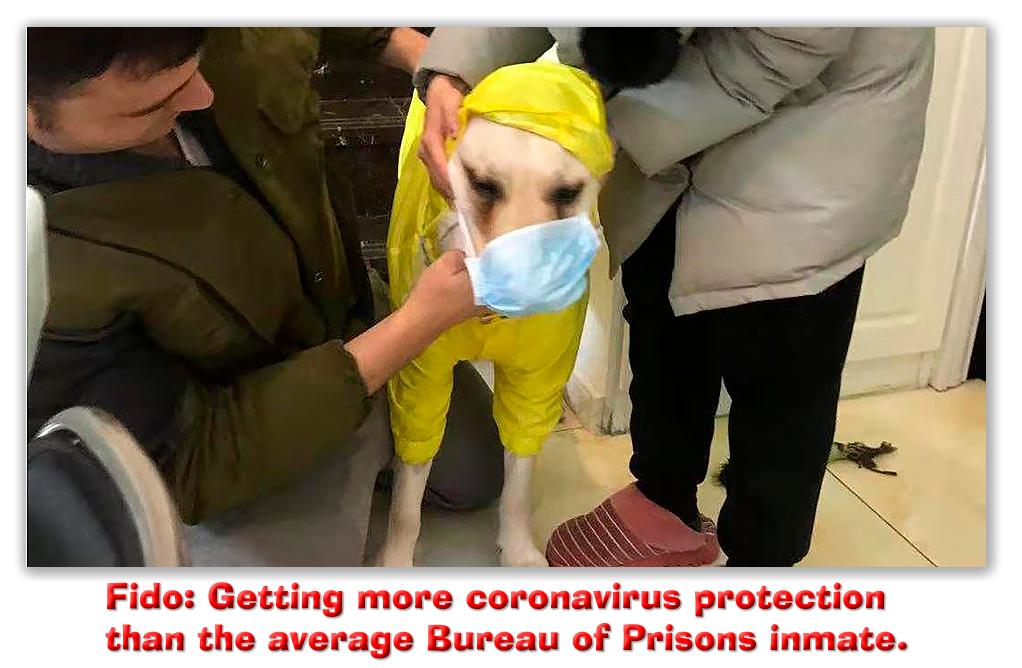 BOP employees at FCI Tallahassee publicly expressed concern over Phase 9’s inmate transportation. “If we’re going to receive inmates that are positive, if we’re going to be assigned to inmates that have already tested positive it’s pretty shaky from day-to-day,” Yalimany Dudley, CO, told WTXL-TV.
BOP employees at FCI Tallahassee publicly expressed concern over Phase 9’s inmate transportation. “If we’re going to receive inmates that are positive, if we’re going to be assigned to inmates that have already tested positive it’s pretty shaky from day-to-day,” Yalimany Dudley, CO, told WTXL-TV.
Dr. Kristian Morgan, a nurse at the FCI, said inmates are coming in without being tested beforehand, bringing the virus with them. “We received about eight inmates from the Marshal Service last week. Five of those tested positive as soon as they entered inside the institution when we did rapid testing.”
BOP Memorandum, Coronavirus (COVID-19) Phase Nine Action Plan (August 5, 2020)
CNN, Inside the federal prison where three out of every four inmates have tested positive for coronavirus (August 8, 2020)
KTVT, Inside the Federal Prison Where Three Out of Every Four Inmates Have Tested Positive for Coronavirus (August 9, 2020)
Canon City Daily Record, 3 new cases of COVID-19 in Fremont County; Bureau of Prisons reporting 3 cases (August 3, 2020)
Honolulu Civil Beat, First Hawaii Inmate Tests Positive for COVID-19 Along With 4 Corrections Officers (August 7, 2020)
ABC News, As coronavirus spreads through nation’s jails and prisons, lawmakers demand more transparency on toll (August 6, 2020)
WXII-TV News, ‘We’re Risking Our Lives’: Front-Line Federal Workers Sue For Hazard Pay (August 7, 2020)
Forbes, As Bureau of Prisons Enters “Phase 9” Of COVID-19 Plan, BOP Staff Wonder If There Is A Real Plan (August 7, 2020)
WTXL-TV, FCI Tallahassee employees fear the worst as inmate transportation restarts (August 6, 2020)
– Thomas L. Root


